Field review: Inon GoPro accessory system
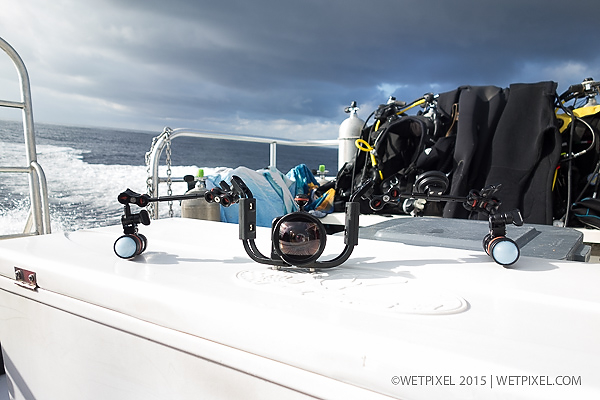
The GoPro range of cameras offers a relatively inexpensive entry into underwater filmmaking. Given that a few years ago, shooting video underwater cost many thousands of dollars, this amounts to a revolution in terms of the numbers of people that have access to it.
However, the cameras have few quirks that limit their usefulness underwater somewhat. Perhaps the primary one is their very limited close focusing ability. The HERO2 and HERO3 versions minimum focus is 12 inches (with 8 inches for Hero3+ and HERO4 Black). Given that the rule of all underwater imaging is to get close, this presents a challenge.

Second, GoPros are very wide (FOV is up to 151° on land). This is compounded by them being very light hungry. This means that if video lights are to be used, they need to be very wide and powerful, particularly given that due to the lack of close focusing ability (above!), the subjects have to be quite far away from the lens.
Inon produce a large range of underwater corrective lenses and lighting solutions for many different camera and lens combinations. With their vast experience, they have analysed the issues surrounding the GoPro cameras and come up with a solution.
SD Cage Mount
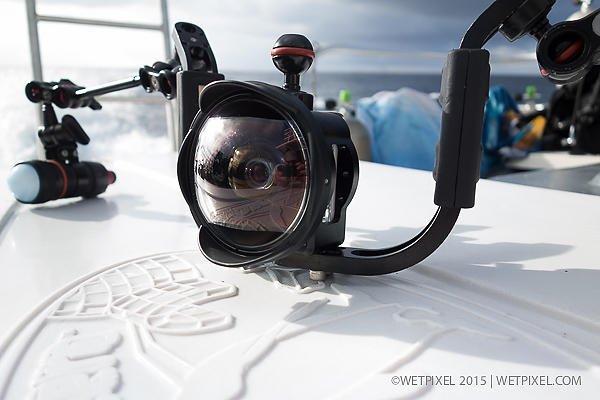
This revolves around the SD Mount Cage, which encases the GoPro housing and provides a bayonet lens mount and access to the camera controls. It is machined out of aluminum and can be used with or without the LCD backpack. It is supplied with a GoPro mount adaptor, but also has multiple attachment points for using with arms, tripods or trays.
The bayonet mount on the cage allows the use of two conversion lenses:
The UFL-G140 SD Underwater Semi-fisheye Conversion Lens.
The lens effectively restores most the GoPro’s native field of view (FOV). In water, refraction limits any wide-angle lens’s FOV. The GoPro has a native FOV of 151° in air, but this drops to around 94° in water. The UFL-G140 also reduces the minimum focus distance (to 3.9 inches for HER03 and 1.6 inches for 3+/4), reducing lens:subject distance and thus making it easier to light scenes effectively.
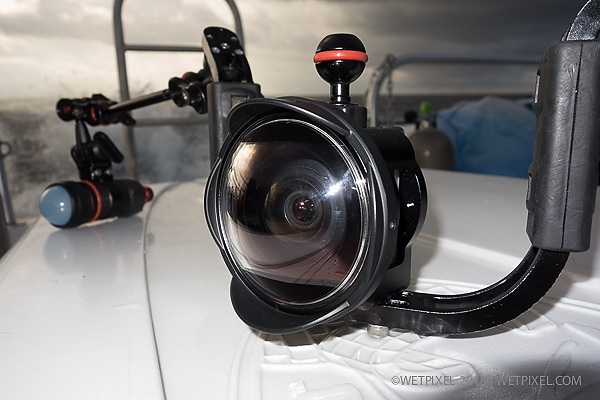
The lens does not vignette in the camera’s wide setting, but is not compatible with SuperView mode.
It consists of 4 elements in 4 groups with a rear element of high refractive index glass and the inner surface of the front acrylic dome has 5 layers of anti-reflective multi-coating.
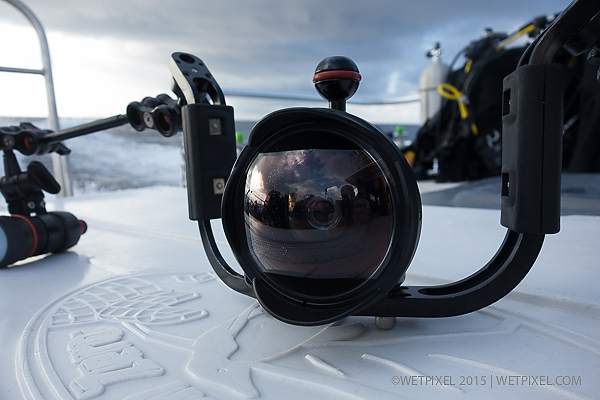
The current mount option is Inon’s SD bayonet mount, although there will be a 55mm screw mount version available.
UCL-G165 SD Underwater Wide Close-up Lens.
This lens allows the GoPro to focus at 2.8 inches for HERO3 or 2.0 inches HERO3+/4. It also increases the camera’s underwater FOV from an affective 94° to 110°. This allows for shooting to approach macro with large subjects.
It has 2 elements in 2 groups made from high refractive index glass lens with each element having an anti-reflection coating.
Currently, it is only available with a bayonet mounting, but there are plans to add an M55 threaded version too.
Both lenses are for underwater use only and will not work on land or in air.
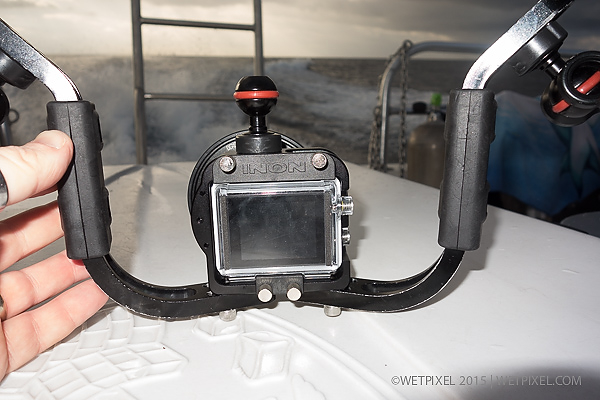
Tray: D Holders and Direct Base III.
Inon supplied the SD cage mount with two D Holders, which can be angled backwards so that they do not appear in shot even when used with the UFL-G140. They attach onto the base of the cage with two allan head bolts and in turn they were supplied with two Direct Base III 1” balls. There was also a Direct Base III attached to the top of the SD cage.
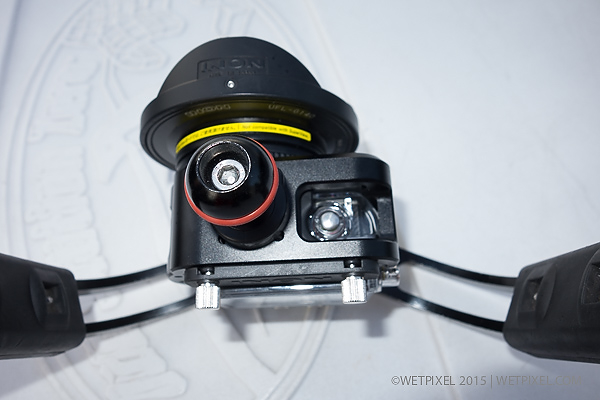
Arms: Stick Arms S.
These arms are designed to be skeletal, to reduce drag in the water and weight. They are machined out of aluminum to a very high tolerance and have 0.9” balls with silicon rubber O rings.
The S length is 6.7” long.

They can be equipped with accessories, and Inon supplied an AD lens holder, that allowed an SD mount lens to be parked on the arm.
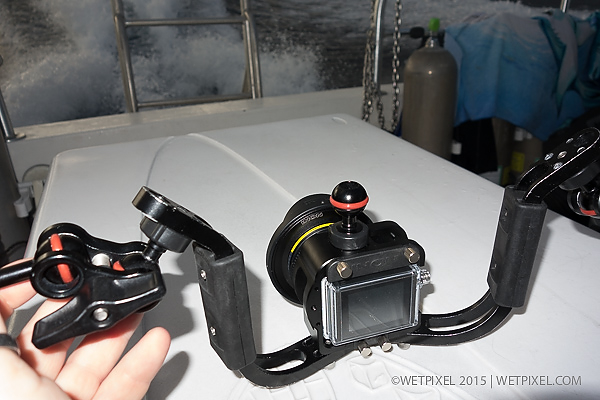
In addition, the arms and tray were connected using Clamp IIIs.
Lights: Inon LF series.
For the review, Inon supplied me with two LF1100-W lights. These are compact LED powered lamps, with an color temperature of 5000°K and two output power settings. At full power, they deliver 1100 lumen for around 50 minutes (depending on battery type) and on low power, 300 lumen for around 210 minutes. They feature a beam angle of around 85° although they were suppled with Dome Diffusers that restore this to 105°,

The lights are powered by three AA sized batteries, which can be obtained pretty well anywhere. If rechargeable batteries are to be used, Inon recommends Eneloop branded ones.
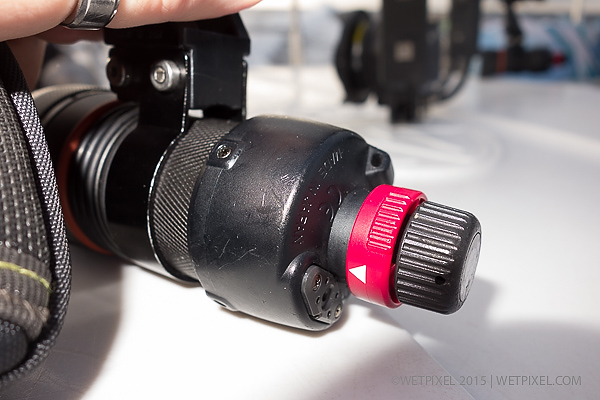
They have a rotary on/off and power switch on their rear, which has a lock ring to prevent them being inadvertently switched on. The lights were supplied with YS mount light holders.
In use.
The SD cage is beautifully made, with a clever design using thumbscrews to hold the GoPro in place. It is important to note that it will only work with the GoPro “Dive” housing, not the newer standard version. The cage will accommodate cameras with LCD backpacks or without. Once inserted and the screws tightened, the camera is very secure within the cage, with almost no movement.
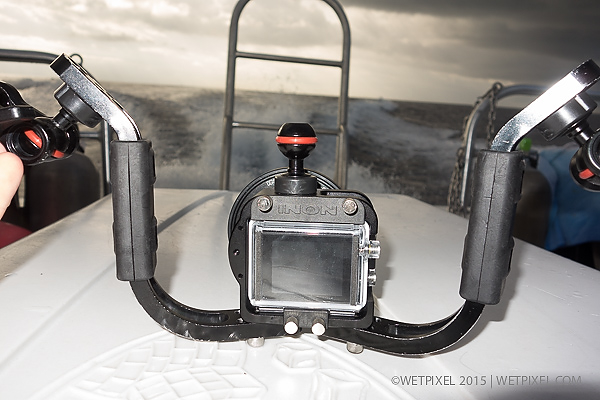
The arms and cage together provide a very stable support and it is easy to get smooth footage with it.
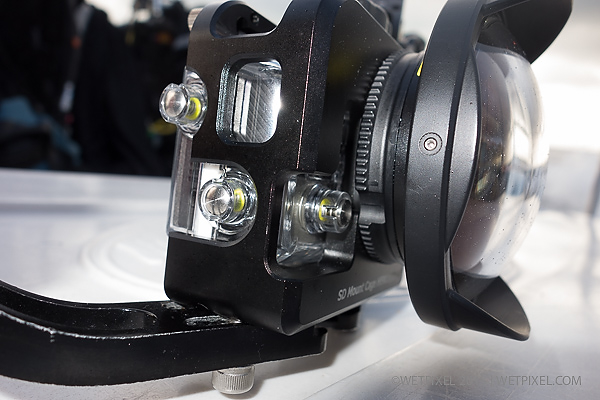
The cage features cut outs that give access to the buttons that control the GoPro as the Dive housings do not offer touch screen access. Given that the housing buttons are small, these cut-outs are also pretty small and the buttons are effectively recessed so accessing them with thick gloves is a challenge. The traditional menu system uses a small LCD screen on the front of the camera, which cannot be viewed once the GoPro has been installed. This makes it necessary to use the LCD Touch Bacpac to see which camera settings are being adjusted.
This does reduce battery life (to around 1 hour), so it is wise to change batteries between dives. On a separate note, I found that the LCD Bacpac was of limited use underwater. Trying to frame or check critical focus was not possible. The diving in the Bahamas is shallow and bright (ideal GoPro conditions), which meant that the LCD did not have enough contrast to be useful. Perhaps Inon could incorporate some kind of shade into the cage?
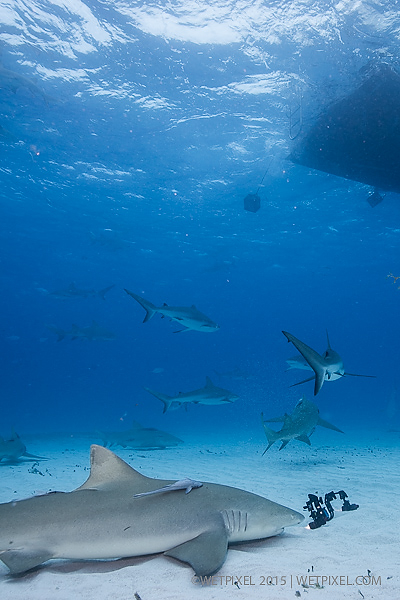
The lenses are great options for both restoring the camera’s FOV and allowing them to focus closely. Given that a “golden rule” of imaging underwater is to get close, this overcomes one of the major drawbacks with using the GoPro underwater. I can also see a great application for it when using the GoPro as a pole cam. Frequently, subjects swim very close to cameras used this way, and the conversion lenses would deal with both focus and depth of field issues.
The optical quality of the lenses is very good, with little (unintended) distortion or chromatic aberration. The fact that they are wet lenses also adds versatility to the system, they can be added or removed as required during a dive.
I was shooting with several GoPros mounted in a variety of different positions. Some of these were equipped with red filters, and in the conditions that we experienced, these did an excellent job of correcting colors in the footage. Unfortunately, the conversion lenses are not compatible with any filter options.
I must confess to some misgivings about using a GoPro in the role of a more traditional video camera. Although they are very economical, they work best when they “trap” footage i.e. are attached in some unique way or angle to provide POV footage and simply left to run. Composition is a challenge with them, and the lens options are really designed to provide coverage of a scene, rather than close focus detail.
GoPro cameras and lights-some thoughts.
Filmmakers tend to use lights to light up shadows, enhance colors and separate objects in the foreground. The idea is that lighting should be unobtrusive, not noticeable and blend seamlessly into the scene being filmed.
GoPros have a relatively small sensor, which by its very definition, means it needs more light than a larger one. This is (broadly) due to the fact that small sensor also have small photosites, which have less area to “catch” photons than a larger photosite. Hence, you can describe the GoPro as being “light hungry”.
This is further complicated by its wide FOV. If lighting is not to be intrusive, the edges of the light put out by any external light source should fall outside of the image, hence avoiding areas where the effect of the lighting is obvious.
In underwater terms, this means that you need lights with a high output: Firstly to provide sufficient lumens to make a significant difference, and secondly you need enough power to light a very wide area.
Inon LF 1100
These light are beautifully made, with gold internal connectors and precise machining throughout. They have a really nice even soft beam with no hot spots or haloing and I felt that their claimed output of 1100 lumen is accurate. The “safety catch” is a little fiddly until you get used to it, but the rotating control works very well.
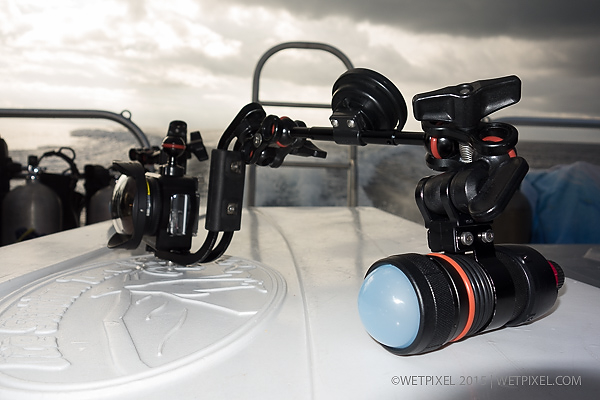
The burn time is well matched to the battery life of the GoPro, and the fact that they take straightforward AA batteries means that you can carry several sets economically.
The standard beam angle of 85° is insufficient with the GoPro but, as mentioned above, Inon had supplied their dome diffusers that give a beam angle of 105°. They also softened and did a good job of wrapping the light around subjects. However, they also reduce the lights’ outputs.
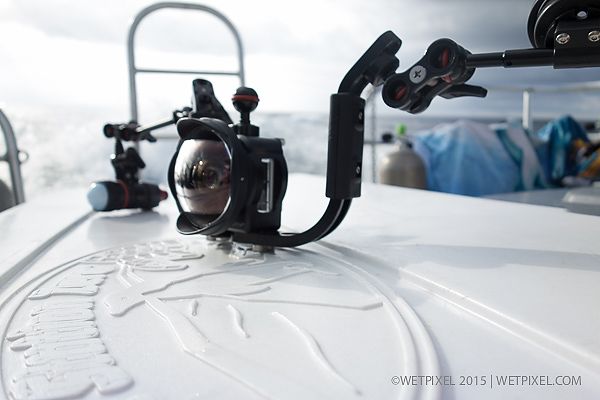
Given my misgivings about GoPros and smaller lights, I did find that the LF1100s were not powerful enough to light up scenes sufficiently, particularly when used in conjunction with the dome diffusers. Their effect was limited unless you were very close to the subject. The combination of the UFL and UCL lenses and lights does make this possible, but I would be wary of using the lights without the ability to focus on subject that are close up.
Conclusion
Inon’s range of GoPro accessories fill some gaps in the camera’s performance underwater. The lenses, cage and handles are definitely an asset to anyone seeking to use a more traditional filming approach with them. Like all Inon products, it is all very well engineered and beautifully made and as such is likely to last many Gopro camera iterations over the years.
For more information, please see the Inon website. All the products are available to purchase from GoPro dealers worldwide.
FCC decleration
Inon loaned all the products and a GoPro HERO4 Black for use in this review. The review was carried out during the Wetpixel Tiger Sharks Expedition 2015.